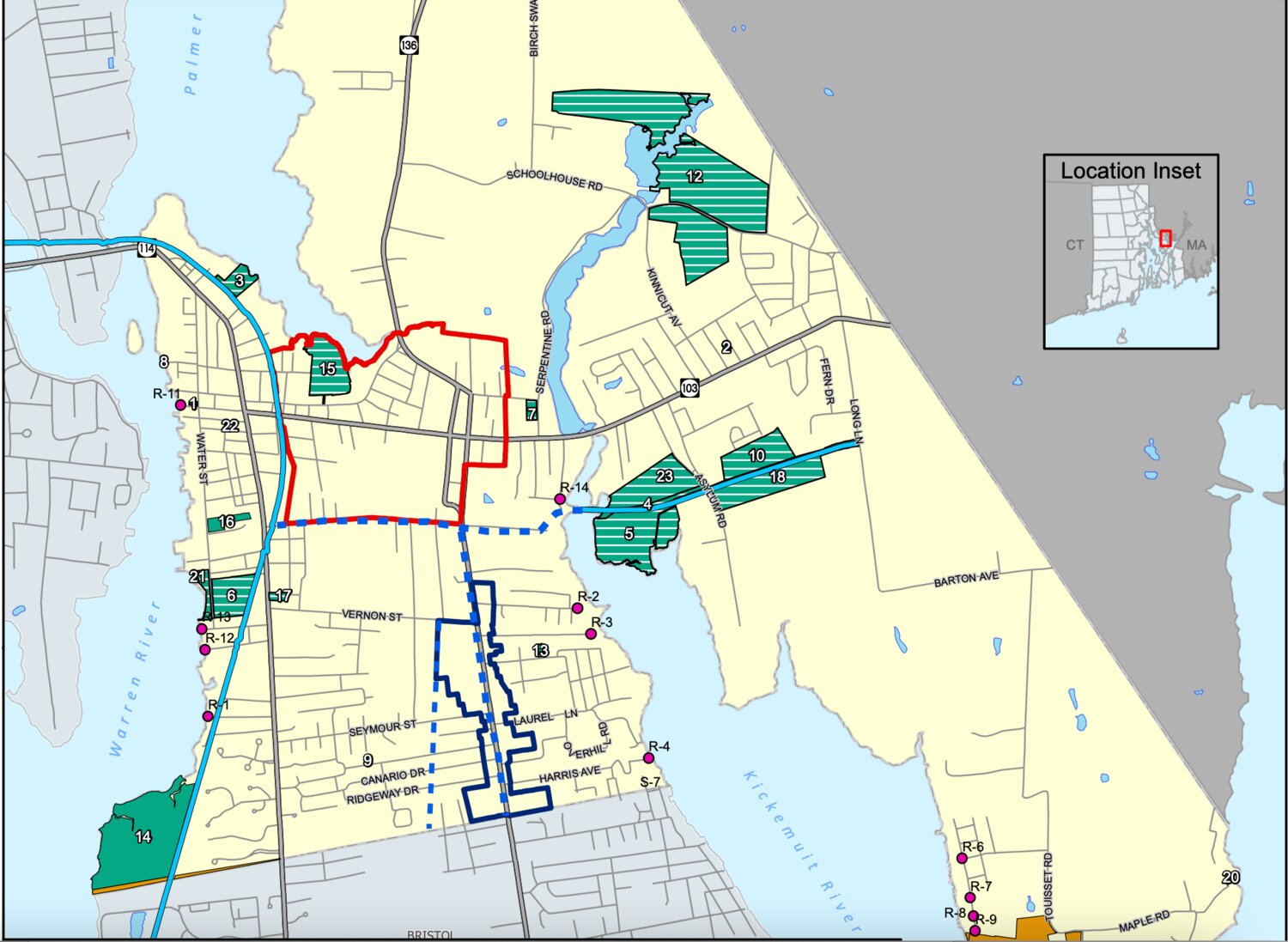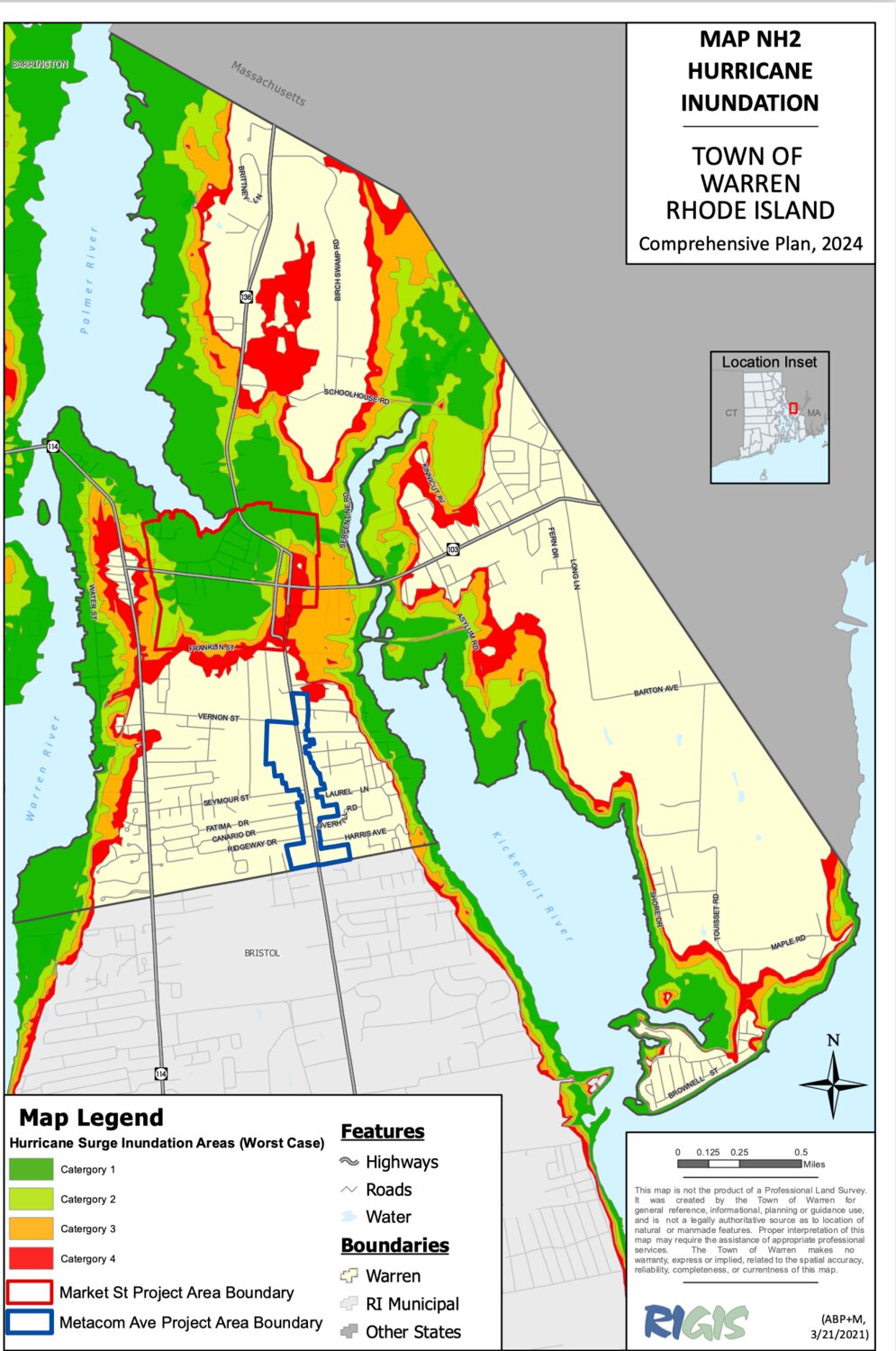Climate resilience and smart development intersect throughout Warren's new Comprehensive Plan
By looking to address climate change as its number one priority, Warren officials and members of the public have drafted a document that seeks to simultaneously affect positive change in multiple other related areas.
This item is available in full to subscribers.
Please log in to continue |
Register to post eventsIf you'd like to post an event to our calendar, you can create a free account by clicking here. Note that free accounts do not have access to our subscriber-only content. |
Day pass subscribers
Are you a day pass subscriber who needs to log in? Click here to continue.
Climate resilience and smart development intersect throughout Warren's new Comprehensive Plan
It only took six years, four Town Planners, four Town Managers and two consultants, but Warren’s first updated Comprehensive Plan in over 20 years has finally been drafted.
The 171-page document, which can be downloaded in its entirety by navigating to the Planning Board portion of the Town website, is a road map of sorts to identify the top priorities for the Town over the next 10 years — a “framework for decision making by local officials that includes an analysis of existing conditions, policies, and actions to achieve those goals,” said Alison Ring, the consultant who worked with the Town of Warren to craft the draft plan.
The massive scale and scope of the plan cannot be adequately explained or digested in one article, but after an analysis of the document over the past few weeks, a clearer picture of the Town’s priorities and approach to tackling some of Warren’s biggest challenges in the coming years does become clearer.
“Our Town’s great future challenges are: safe and affordable housing availability; historic building preservation; protection of agricultural land and wildlife habitat; remedying poorly planned past development; improved pedestrian and bicycle routes and links; and coping with the impact of sea level rise on our Town,” reads the foreword of the plan written by Planning Board Chairman Frederick Massie. “Given these challenges, our Comprehensive Plan goals are to employ synergistic solutions addressing multiple challenges.”
Climate change is at the forefront
The number one priority within the plan is found within its very title — “Resilient Warren: A Comprehensive Community Plan for Adaptation”.
While the plan includes nine separate elements within it, each of those include interconnected links and references to one another as certain goals and initiatives fulfill multiple purposes. However no element shows up as consistently throughout the plan than the specter of climate change, and the issues promised (and already occurring) due to sea level rise caused by climate change.
“Being surrounded by tidal rivers and bays, Warren sits at an average of seven feet above sea level and two thirds of the town is at risk of being under water in fifty years,” reads the opening paragraph of the plan’s introduction. “Sea level rise has the potential to cause dramatic impacts to Warren’s geography, natural resources and infrastructure and as a result adverse impacts to commerce, housing, municipal finances, and quality of life.”
One of the core elements of the plan stems from the “Market to Metacom” concept first proposed by former Town Planner Bob Rulli, which (greatly simplified) strives to buyout property owners from the low lying areas of Town over the coming decades, restore the Market Street area into natural wetlands as a flood mitigation buffer for the rest of the area, and focus new development and redevelopment within the Metacom Avenue corridor, which sits at higher elevation.
The threat of climate change, and the steps taken to try and address it, touches all elements of the plan.
If you care more about historic preservation, turn to the page showing a Rhode Island Historical Preservation & Heritage Commission (RIHPHC) sponsored report completed in 2015 that estimated a total of 223 National Register listed or eligible properties within Warren are located within FEMA Flood Zones.
Care more about open space and recreation? The plan looks to enforce open space requirements and green space within form-based code for new developments along the preferred Metacom Avenue project area.
If you want to stop pollution, the plan looks to reduce the amount of impervious asphalt, and require the installation of stormwater mitigation features such as rain gardens and more trees throughout the town, all of which are intended to prevent rainwater pollution from winding up in the Kickemuit River.
More of an economic development kind of person? Well, it’s hard to build an economy when a significant portion of the businesses in town risk being underwater in 50 years.
Massie said in a recent interview that while the Market to Metacom imprint can be found throughout the document, it is not the sole focus of the plan, as the redevelopment of Metacom Avenue relies on multiple variables. The threat presented by climate change, however, is not up for debate.
“[Addressing] Market Street is something that will have to happen. Metacom is something that would be nice to happen, which is the fundamental difference there,” he said. “Market Street is already being flooded, and the march is on to protect that as well as we can and to serve as a buffer for the rest of the town. Metacom has the potential to be a fantastic opportunity for a variety of uses; a mix of residential and commercial. But that is dependent on a great number of factors, not the least of which is someone with the money and vision to make that happen.”
Housing and preserving Warren’s character is another pillar
Unless you’ve been enjoying a long vacation under your favorite rock, the concept of historic preservation being a hallmark of the new Comprehensive Plan will likely not surprise you.
The draft Plan seeks to make development within the Town’s historic sector more difficult, while making development of the Metacom Avenue corridor more attractive through the implementation of form-based code and the building of a parcel inventory to help developers identify properties suitable for future projects.
At the same time, the plan looks to ensure that any residential development that does occur in the historic district “is designed to complement historic and scenic resources and does not result in negative impacts on natural resources and neighborhood character.”
One way they would seek to do this is to give the local historic commission more teeth by getting it certified with the Rhode Island Historical Preservation & Heritage Commission, which would also open the Town up for eligibility to receive Certified Local Government (CLG) grant funding for preservation projects and enable them to recommend properties for placement on the National Register of Historic Places.
The plan also mentions looking into the potential of creating other historic districts in Town that would cover areas such as South Main Street, the Parker Mill neighborhood, Cutler Mills, Touisset Point, and Windmill Hill/The Kickemuit River.
“It’s not just limited to the downtown,” said Massie in a recent interview. “There’s the sense of, how do you preserve things that are historically from the 1600s all the way up to 100 years ago…At the same time, change occurs. And we want to manage change, and not say we’re going to preserve Warren like downtown Williamsburg, because that’s not going to happen.”
In regards to housing, the draft plan states one of its goals is to seek legislative action recognizing existing units in Town paid for through federal housing vouchers, and to utilize mixed-use developments along Metacom Avenue, more considerate implementation of the Comprehensive Permit in acceptable areas, and adaptive reuse of vacant properties to get the Town closer to its 10% affordable housing requirements.
Next steps
The Comprehensive Plan is currently in its draft form. Some elements are still undergoing State review, and the Warren Town Council will also get a bite at the apple with public hearings of their own.
Once the Town Council approves the plan, it will go before the state for a final approval.
“We have had public hearings throughout this, so there are no surprises or hidden scorpions in the plan here. It’s been transparent throughout the process,” Massie said. “That being said, every time the public comes in we’ve had some great ideas being proposed…It certainly is open to further tweaking at this point.”
Other interesting elements found within
Once again, it is impossible to summarize a 171-page document in this format, so we encourage everyone interested in this topic to read the report yourself.
Here are some of the other tidbits within the plan that we found interesting and worthy of note.
Transportation and Recreation:
- Strive to turn Metacom Avenue into a three-lane road with a turning lane in the middle and bicycle lanes on either end;
- Establish a Bike Path and Trails Commission to explore creating more dedicate bike lanes throughout town, such as along the electrical line easement near the National Grid property close to the bridge;
- Look into the creation of an interconnected network of bicycle/pedestrian paths that connect western and eastern portions of Town and connect the Warren Bike Path to the East Bay Bike Path;
- Limit on-street parking in downtown areas and encourage use of underutilized parking lots, and promote a “park and walk” environment by creating a color-coded path to nearby points of interest
- Expand the river walk near Tourister;
- Add floats and facilities (bathrooms, showers, power, trash receptacles) to Town Wharf to make it more attractive to transient boaters
Economic Development:
- Create more connections between schools and local businesses to train and foster talent;
- Look into possibility of low-cost leasing of publicly owned and/or conservation land to farmers;
- Establish town-wide, affordable broadband internet access;
- Undertake a branding exercise with local creative talent to advertise Warren
Services and Facilities:
- Look into selling Mary V. Quirk center;
- Look into improving animal shelter through a shared services agreement with another municipality
- Expand sewer capacity to enable more development of Metacom Avenue
- Acquire property for the construction of centralized fire/rescue headquarters
- Re-evaluate unlimited curbside pickup for trash/consider implementation of a “pay as you throw” system for solid waste collection









